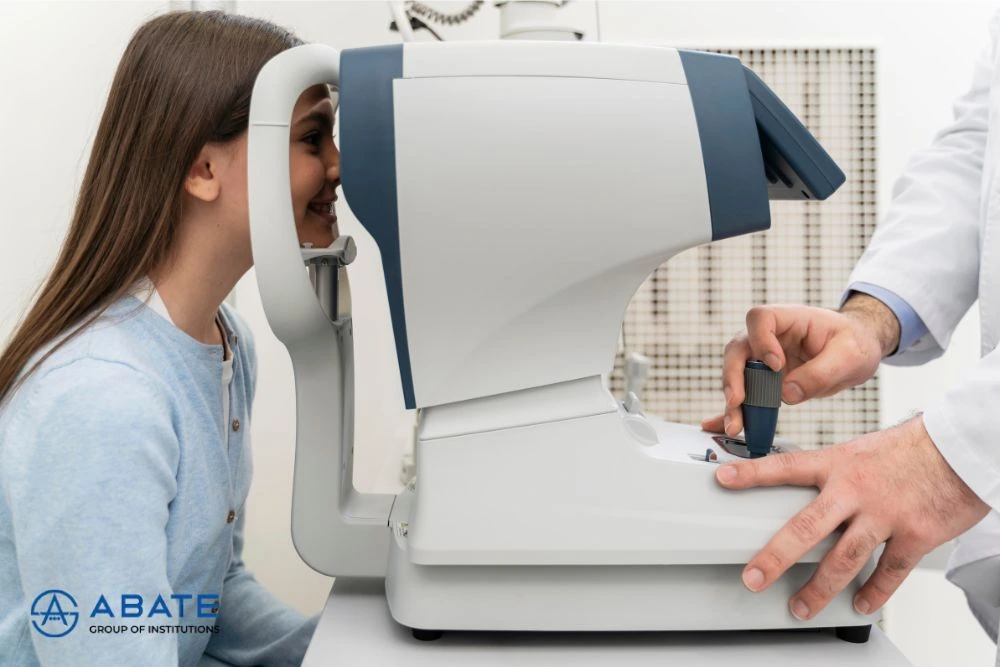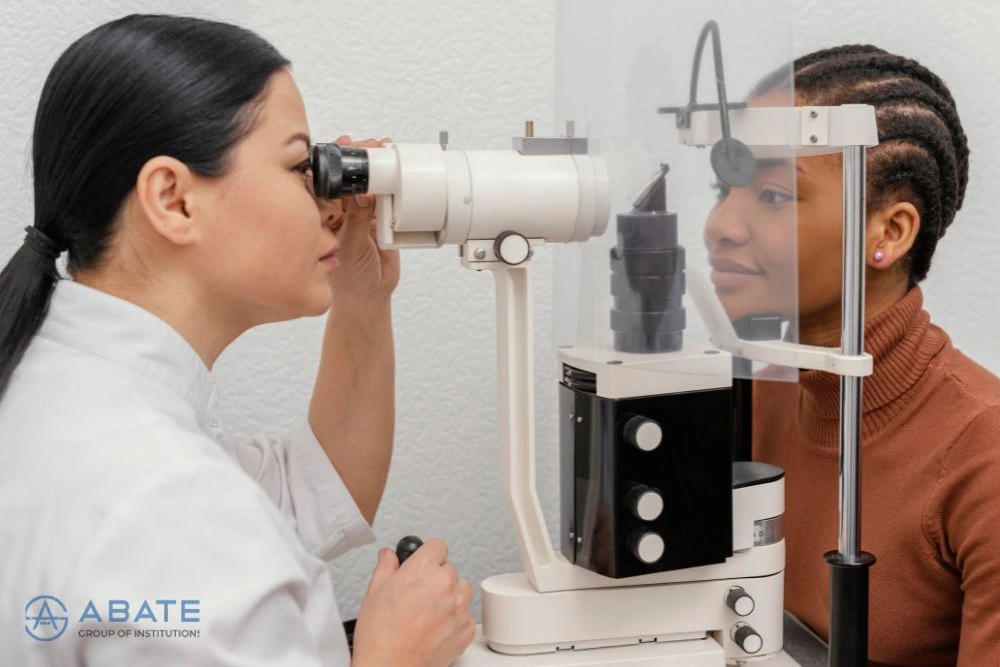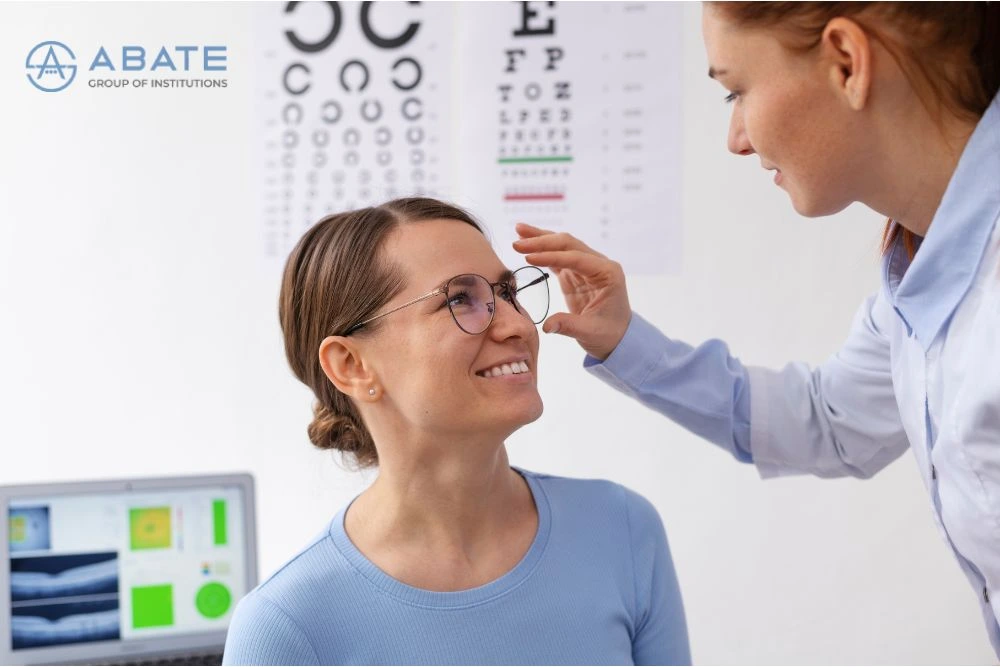Optical Coherence Tomography (OCT): A Game-Changer in Eye Diagnostics

In the world of eye care, technology has transformed the way professionals diagnose and manage vision problems. One of the most significant advancements in recent decades is Optical Coherence Tomography (OCT) — a non-invasive imaging technique that allows eye care specialists to view the retina in extraordinary detail.
At Abate Institution, we believe in preparing future eye care professionals with the knowledge and skills to use such cutting-edge tools effectively. For students pursuing careers in vision science, such as those enrolled in a BSc Optometry in Malappuram, understanding OCT is essential for both academic learning and practical application.
What is Optical Coherence Tomography (OCT)?
OCT is an advanced imaging method that uses light waves to take cross-sectional pictures of the retina, which is the light-sensitive tissue lining the back of the eye. By capturing these images, eye care specialists can see each of the retina’s distinctive layers.
This detailed view helps detect, diagnose, and monitor a variety of eye conditions, including:
- Macular degeneration
- Diabetic retinopathy
- Glaucoma
- Retinal detachment
The best part? OCT is painless, quick, and safe for patients of all ages.
How OCT Works
OCT operates much like an ultrasound, but instead of using sound waves, it uses light waves to create detailed images. The device directs a beam of light into the eye and measures how it reflects off different structures. The data is then processed to generate high-resolution cross-sectional images of the retina.
This process is so precise that even tiny changes in retinal thickness can be detected, making OCT an invaluable tool for early diagnosis and treatment planning.
Why OCT is a Game-Changer
Before OCT technology, diagnosing certain eye diseases often relied on invasive procedures or less detailed imaging methods. Today, OCT allows for:
- Early Detection – Many eye diseases show subtle changes before noticeable vision loss occurs. OCT can spot these changes early, enabling prompt treatment.
- Non-Invasive Precision – Patients don’t need injections or contact with the eye, making the test comfortable and safe.
- Monitoring Progress – OCT enables optometrists and ophthalmologists to track changes in eye health over time, ensuring treatments are effective.
- Better Patient Education – High-quality images help professionals explain conditions to patients, improving understanding and compliance.
OCT in Clinical Practice
OCT has become a standard tool in many eye care settings. For example:
- Optometrists use OCT to screen patients during routine eye exams, especially those at risk for conditions like glaucoma.
- Ophthalmologists rely on OCT for surgical planning and post-operative follow-up.
- Retina specialists use OCT to monitor diseases like macular degeneration or diabetic retinopathy.
This technology bridges the gap between early detection and effective treatment, ultimately helping to prevent vision loss.
Learning OCT at Abate Institution
For aspiring eye care professionals, hands-on experience with OCT is an invaluable skill. Abate Institution integrates the latest diagnostic technologies into its curriculum, ensuring students are prepared for real-world practice.
Students pursuing a BSc Optometry in Malappuram at Abate Institution not only learn the theoretical aspects of vision science but also gain practical exposure to OCT and other diagnostic tools. This combination of knowledge and experience makes them industry-ready and confident in using modern technology to provide top-quality patient care.
Future of OCT Technology
Like all medical technologies, OCT continues to evolve. Newer versions are faster, provide even higher resolution, and can scan deeper into the eye. Some advancements include:
- Swept-Source OCT – Uses a different light source for deeper penetration and faster scans.
- OCT Angiography (OCTA) – Provides detailed images of the blood vessels in the retina without the need for dye injections.
- Portable OCT Devices – Allow eye care professionals to bring high-quality diagnostics to remote locations.
These innovations will make OCT even more essential in both urban clinics and rural outreach programs.
Conclusion
Optical Coherence Tomography has revolutionized eye diagnostics, giving professionals a powerful tool to detect diseases early, monitor treatment, and educate patients. For students and practitioners alike, mastering OCT is no longer optional — it’s a necessity.
At Abate Institution, we are committed to training the next generation of eye care professionals to harness such groundbreaking technologies. Whether you are a student stepping into the world of vision science or a patient seeking the best care, OCT represents the future of precise, effective, and compassionate eye health services.


